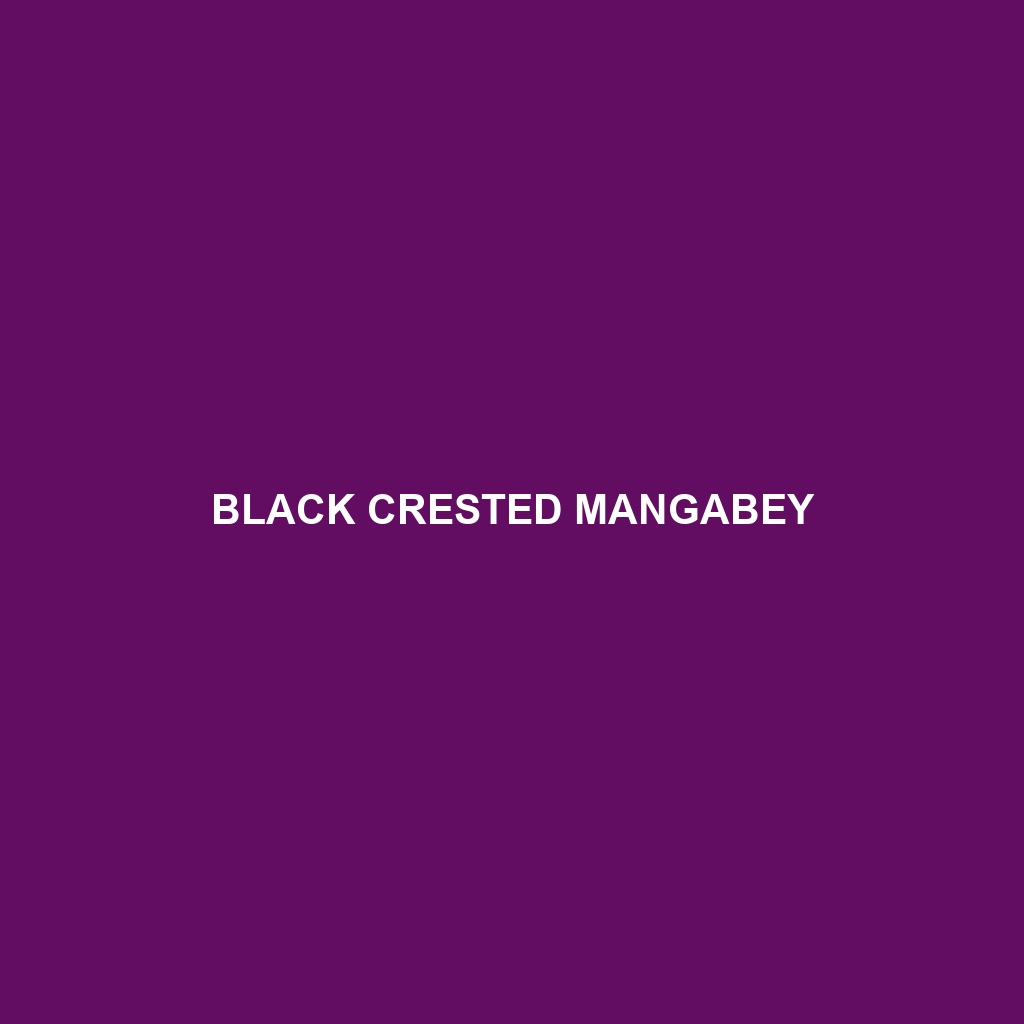Black Crested Mangabey (Lophocebus aterrimus)
:
The Black Crested Mangabey, scientifically known as Lophocebus aterrimus, is a fascinating Old World monkey species native to the rainforests of Central Africa. Known for its distinctive black crest and agile movements, this primate captivates with its complex social structures and dynamic behaviors.
Physical Characteristics:
Size: Adult Black Crested Mangabeys typically measure between 40-65 cm (16-26 inches) in body length, with a tail almost equal in length, adding an additional 50-75 cm (20-30 inches). Males are generally larger than females.
Weight: Males weigh around 9-13 kg (20-29 lbs), while females are lighter, weighing between 7-10 kg (15-22 lbs).
Coloration: As their name suggests, these mangabeys are predominantly black, with a glossy sheen to their short fur. The most striking feature is their black crest of hair on the top of their head, which can be raised or flattened, adding to their expressive appearance.
Special Features: They possess long, powerful limbs and a prehensile tail, which aids in their arboreal lifestyle. Their large eyes and expressive faces make them particularly engaging to observe.
Behaviors:
Social Interactions: Black Crested Mangabeys are highly social animals, living in troops that can range from a few individuals to over 30 members. These groups are usually led by a dominant male and have a clear hierarchical structure. They communicate through a series of vocalizations, facial expressions, and body postures.
Feeding Habits: Their diet is omnivorous, consisting mainly of fruits, seeds, leaves, and insects. They are also known to eat small animals and bird eggs. Their foraging activities play a crucial role in seed dispersal, contributing to forest regeneration.
Ecological Role: As frugivores and seed dispersers, they are vital for maintaining the health and diversity of their rainforest habitats. Their predatory behavior towards insects helps control pest populations.
Habitats:
Geographical Range: They are primarily found in the Democratic Republic of Congo, with populations also in neighboring countries like Angola and the Central African Republic.
Preferred Habitats: Black Crested Mangabeys thrive in dense tropical rainforests, swamp forests, and sometimes in secondary forests. They are adept at navigating both the forest floor and the canopy.
Adaptations:
Arboreal Adaptations: Their strong limbs and prehensile tail allow them to adeptly maneuver through the forest canopy, leaping between branches and hanging upside down to forage.
Communication: Vocalizations are a key adaptation for maintaining group cohesion in dense forest environments where visual contact can be challenging. They have an extensive range of calls for different purposes, including warning signals and social bonding.
Conservation Status:
IUCN Red List: The Black Crested Mangabey is currently listed as Vulnerable. Their populations are threatened by habitat loss due to logging, agricultural expansion, and hunting pressures.
Conservation Efforts: Conservation strategies include habitat protection, anti-poaching measures, and programs aimed at sustainable land use practices. Some areas of their range are within protected reserves, which helps provide sanctuary from human encroachment.
Fascinating Fun Facts:
Expressive Faces: The Black Crested Mangabey’s facial expressions are incredibly nuanced, with the ability to convey a wide range of emotions, much like humans.
Tool Use: While not as commonly observed as in some other primates, there have been instances of Black Crested Mangabeys using tools to extract food from hard-to-reach places.
Vocal Range: They have one of the most varied vocal repertoires among Old World monkeys, with calls that can travel long distances through the dense forest.
Longevity: In the wild, they can live up to 20 years, with some individuals in captivity reaching even older ages due to a lack of predators and consistent food supply.
By learning more about the intriguing Black Crested Mangabey, we can better appreciate the importance of conserving these intelligent and vital inhabitants of our planet’s tropical forests.
